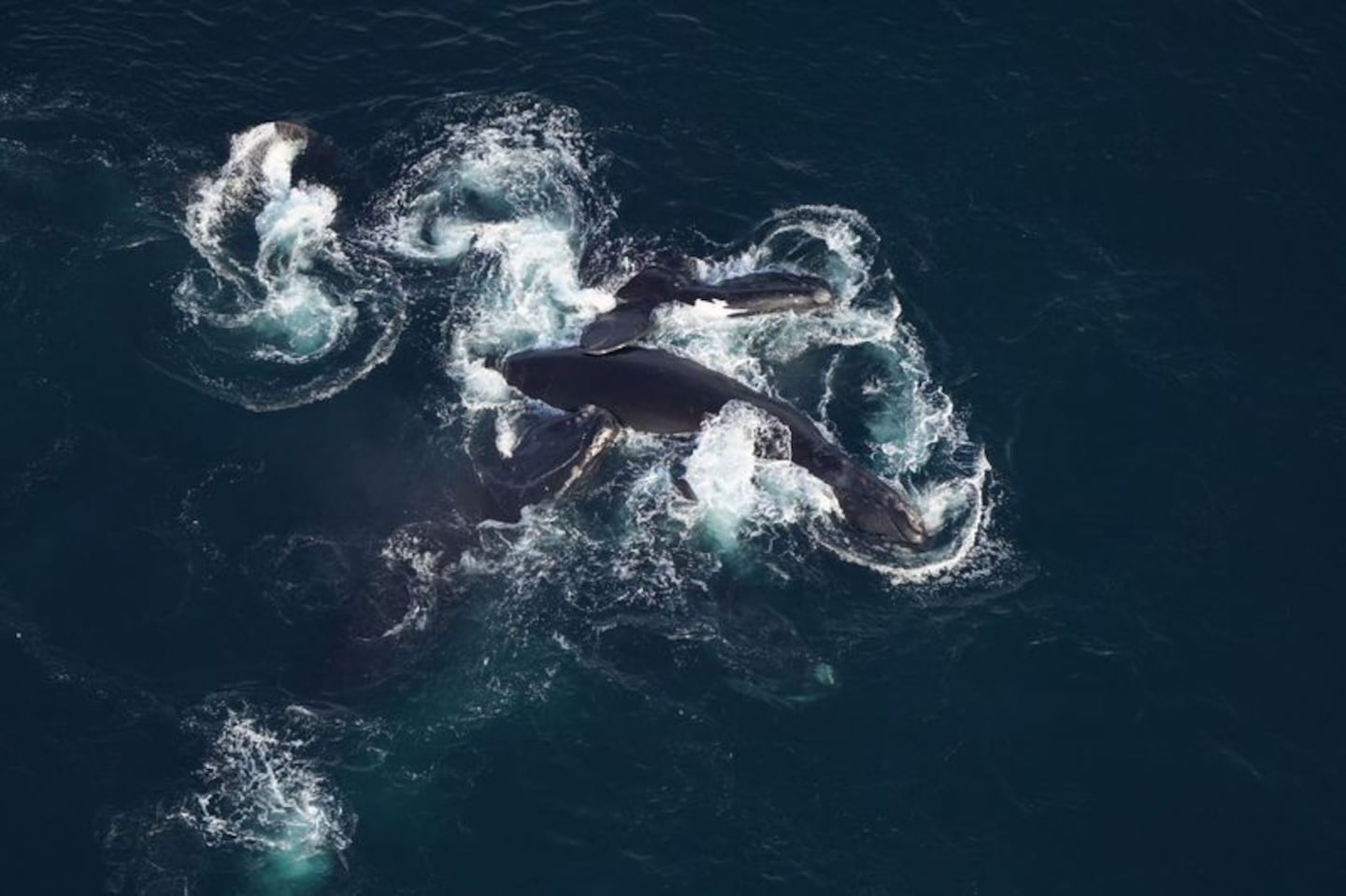It’s a majestic sight you don’t see every day.
More than 82 unique North Atlantic right whales - including 56 in one day - were spotted swimming together in a multi-grouping pattern that scientists from the New England Aquarium’s Anderson Cabot Center for Ocean Life called “unusual.”
Scientists from the Boston-based center spotted the whales, representing over one quarter of the entire North Atlantic right whale population, during a series of flights between the end of July and into August, about 40 to 70 miles south of Long Island, New York.
The area is highly trafficked by vessels and an unusual feeding ground for the critically endangered species, New England Aquarium officials said in a statement on Tuesday.
“This mid-Atlantic aggregation is a good reminder that the movement patterns of North Atlantic right whales are always responding and adapting to changing ocean conditions,” said Katherine McKenna, an Anderson Cabot Center research scientist who was aboard several of the five aerial survey flights. “This multi-month grouping of whales south of Long Island is very unusual.”
The sight of the North Atlantic right whales congregating off Long Island also raised ongoing concerns for their safety.
Vessel strikes and entanglement are the two leading causes of serious injury and death for the whales, officials said. There are currently less than 360 North Atlantic right whales remaining.
In recent years, there has been widespread redistribution of right whales as they respond to changes in where their prey is located, researchers said.
North Atlantic right whales were seen in the Hudson and Block Canyon areas south of Long Island along with an abundance of fin and humpback whales, various dolphin species, manta rays, whale sharks, tuna, and sea turtles.
Hudson Canyon is a vast submarine canyon over 70 miles off New York and New Jersey at the outlet of the Hudson River. Block Canyon is a smaller canyon approximately 50 miles northeast of Hudson Canyon.
Typically, whales congregate in areas where they can feed efficiently, researchers said. North Atlantic right whales have likely been feeding in that area for months now, and their presence near the canyons could indicate plentiful food.
The scientists saw the whales spending up to 10 minutes under the surface before re-emerging in the same areas and occasionally defecating. Both behaviors indicate feeding.
An aerial survey team with Northeast Fisheries Science Center first documented this aggregation at the end of May and continued to document it before the Anderson Cabot Center team’s sightings.
“The sightings and aerial surveys by the Aquarium team have been critical to helping understand the right whales’ use of the region,” said Tim Cole, a research fisheries biologist with Northeast Fisheries Science Center.
There are currently no mandatory speed restrictions, which reduce the risk of lethal vessel strikes to large whales, where these aggregations have been sighted, researchers said.
That’s concerning to marine wildlife researchers.
“The proximity of such a large proportion of the population to a busy marine traffic area for so long raises concern about the risk of vessel strikes to these whales,” New England Aquarium officials said in their statement. “Several were seen with propeller wounds, which serves as a reminder that it is important for mariners to be on the lookout for whales, even when mariners are not traveling in mandatory slow zones.”
NOAA is currently considering modifications to the existing vessel speed rule to better protect North Atlantic right whales.
Proposed changes to the federal vessel speed rule include expanding the size of areas with seasonal speed restrictions, increasing the length of time speed restrictions are in effect, extending restrictions to include most vessels measuring 35 to 65 feet in length, and implementing mandatory speed restrictions in dynamic speed zones, which are established when and where whales are observed and likely to persist.
Aquarium scientific research shows that the proposed expansion of the speed restriction areas will increase protections for North Atlantic right whales and that other large whale species would also benefit. The proposed rule was published in August 2022 but has not yet been finalized.
“The untenable delay has put this endangered species at continued risk of extinction,” Aquarium officials said.
The Aquarium also documented fishing gear near the whales seen in the Hudson and Block Canyon areas south of Long Island.
“The New England Aquarium urges immediate, science-based action to reduce those threats,” officials said.
This is a developing story. Check back for updates as more information becomes available.
Download the FREE Boston 25 News app for breaking news alerts.
Follow Boston 25 News on Facebook and Twitter. | Watch Boston 25 News NOW
©2024 Cox Media Group






















